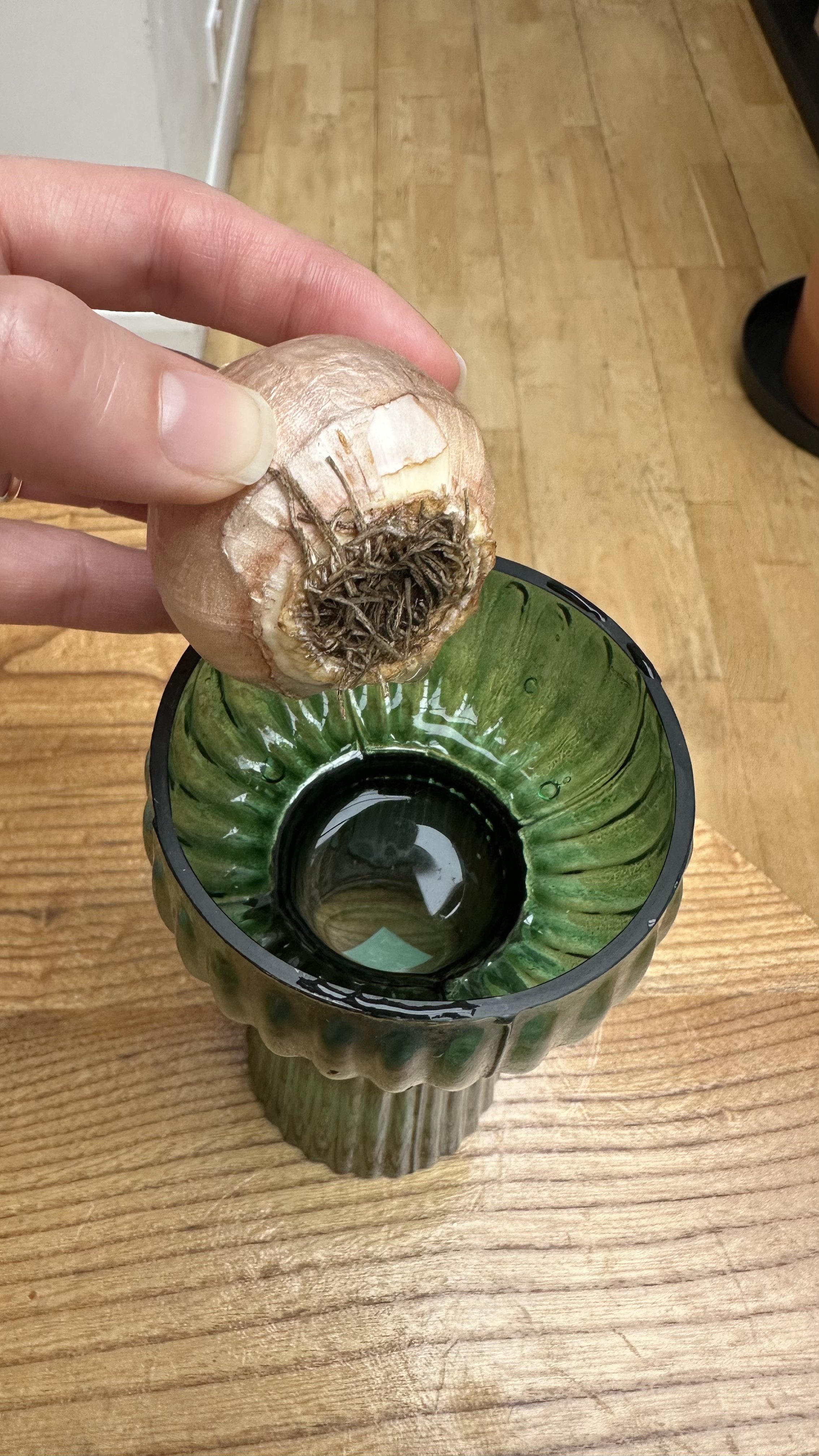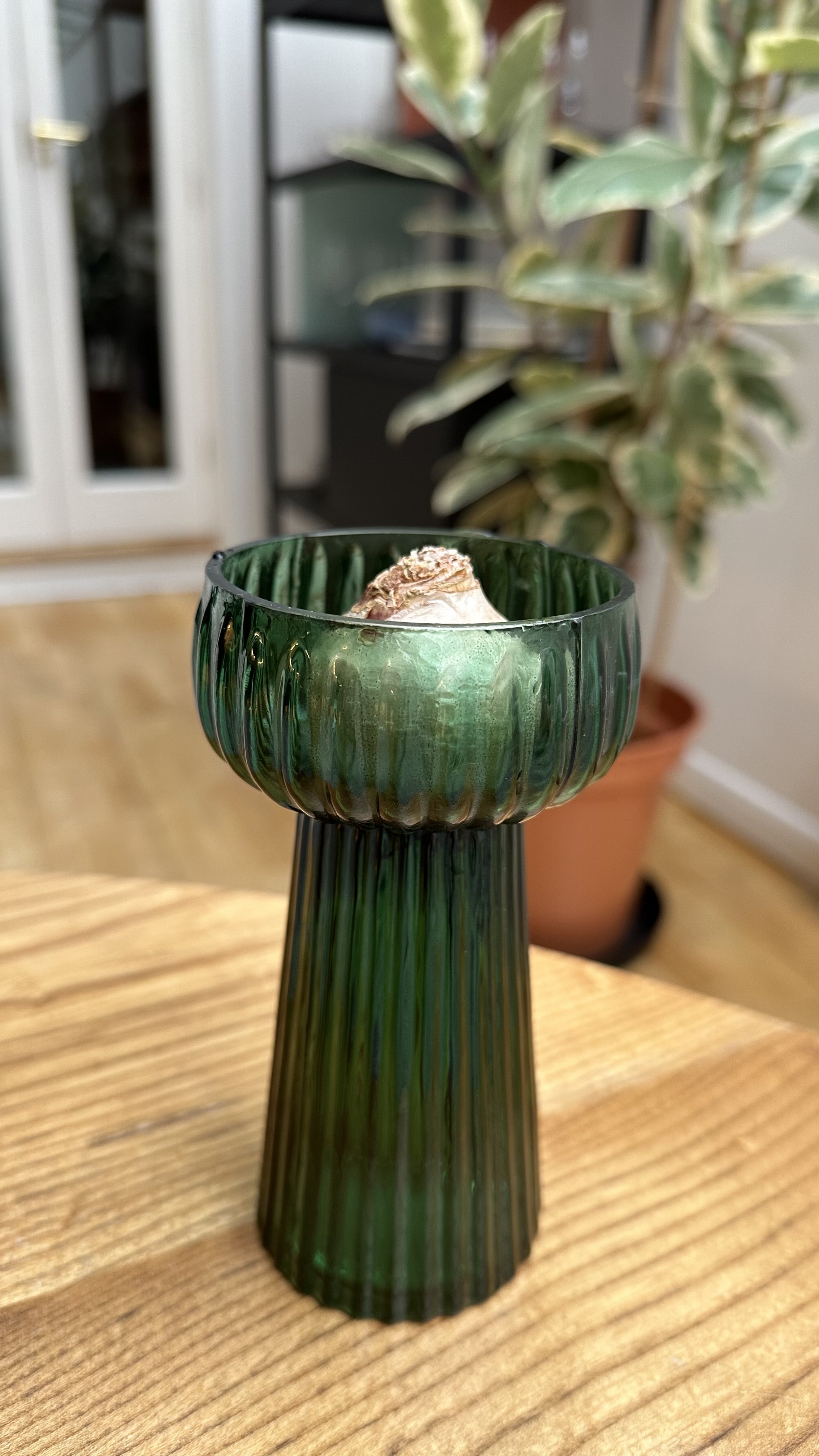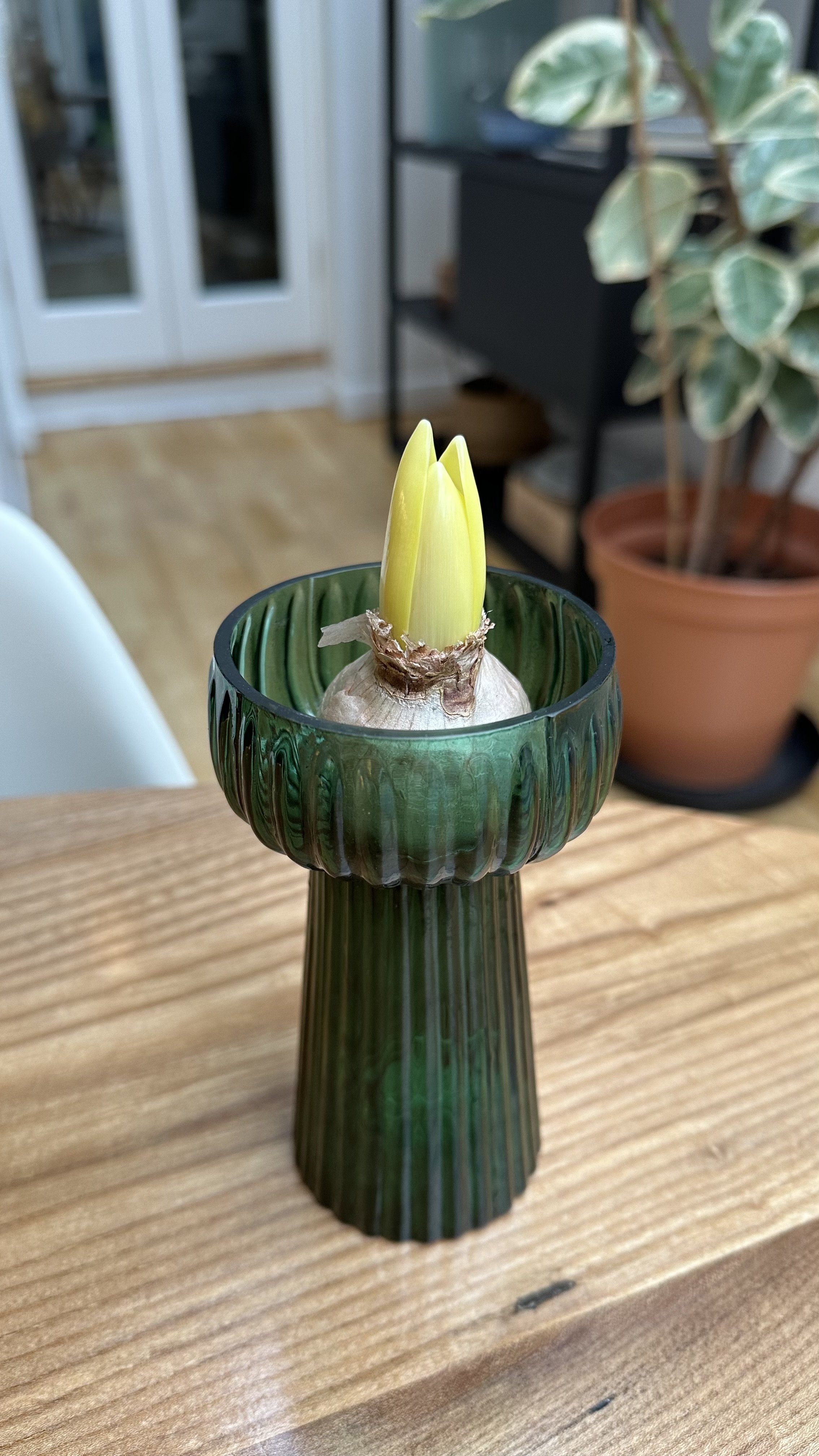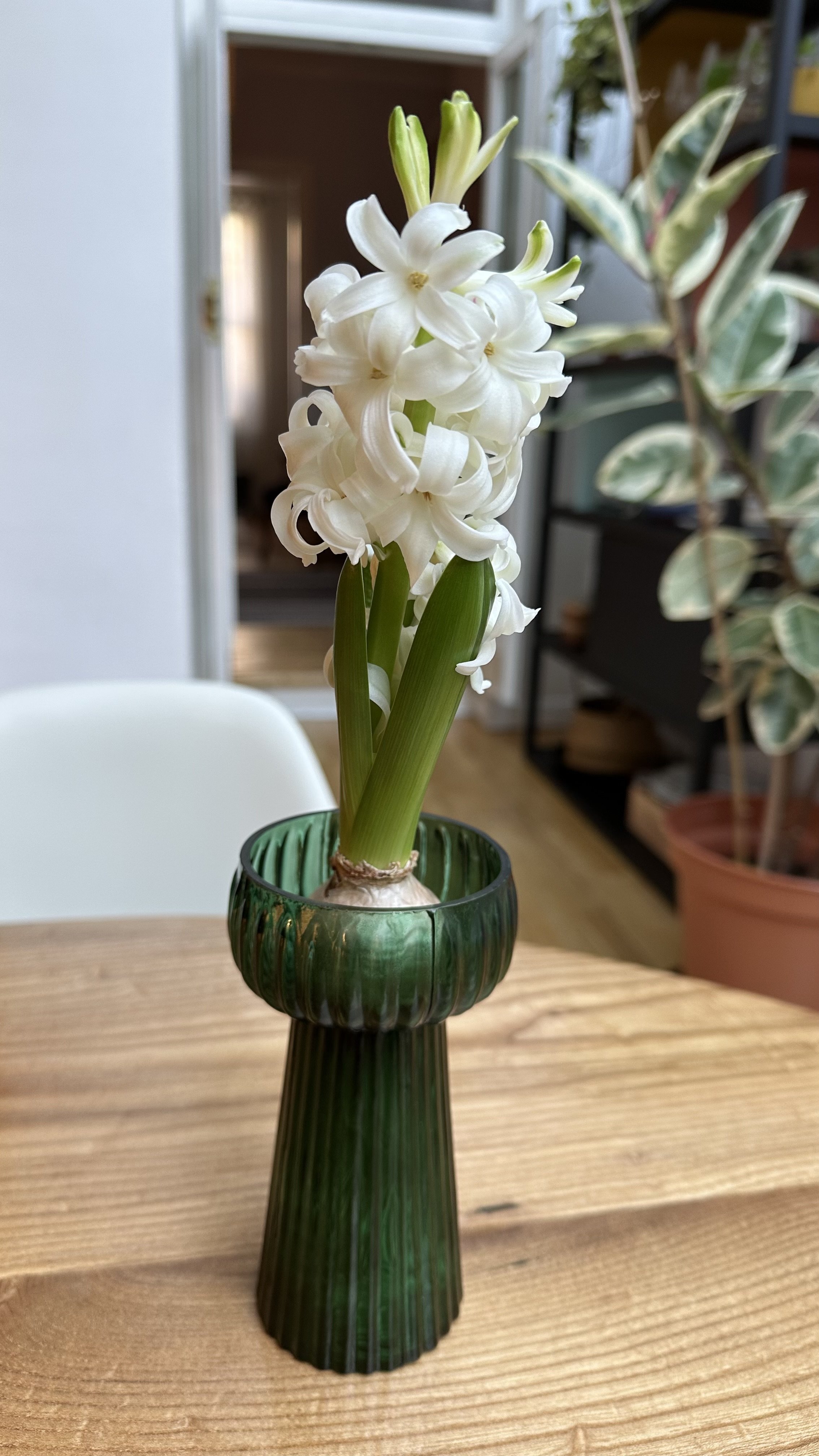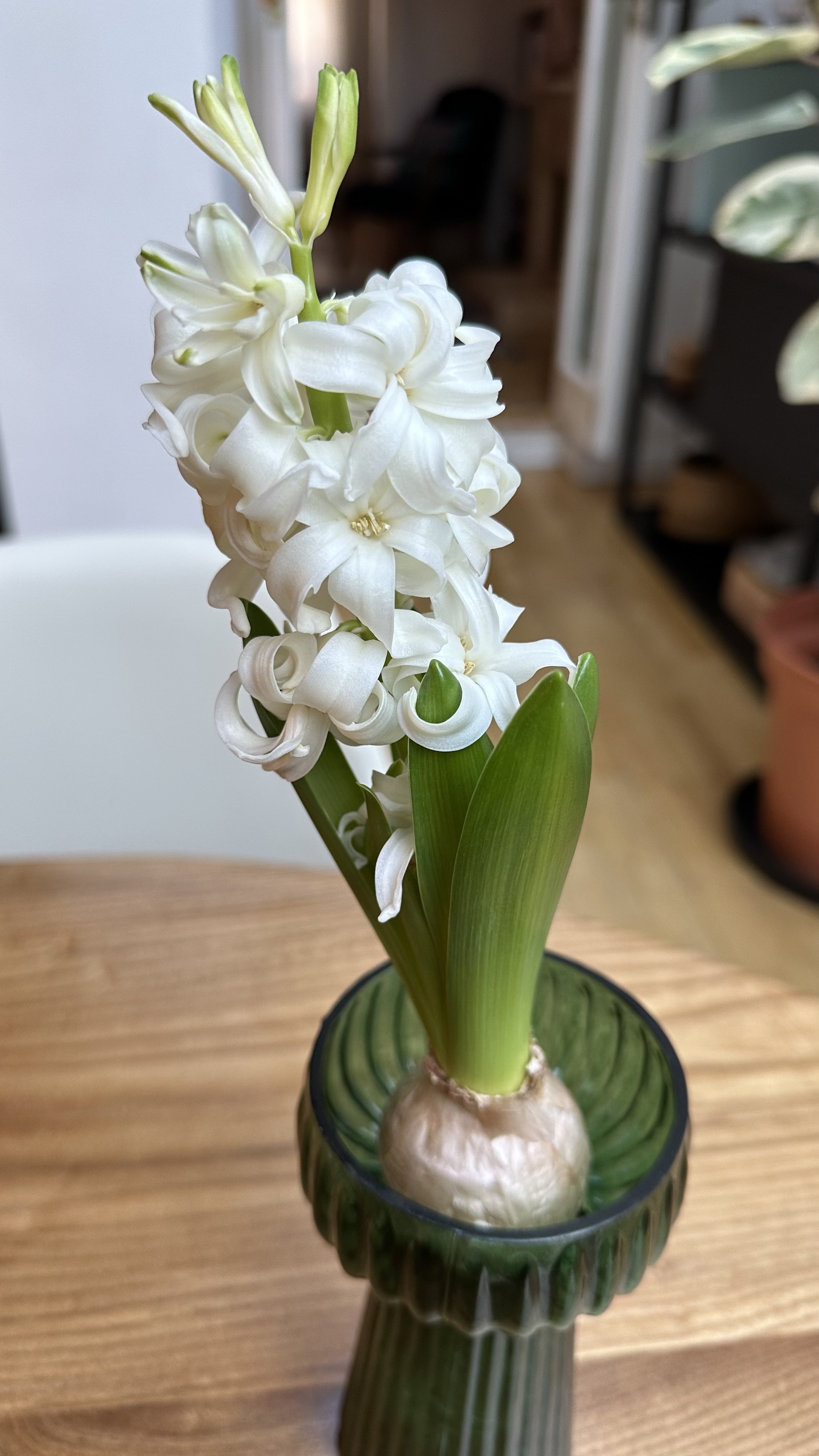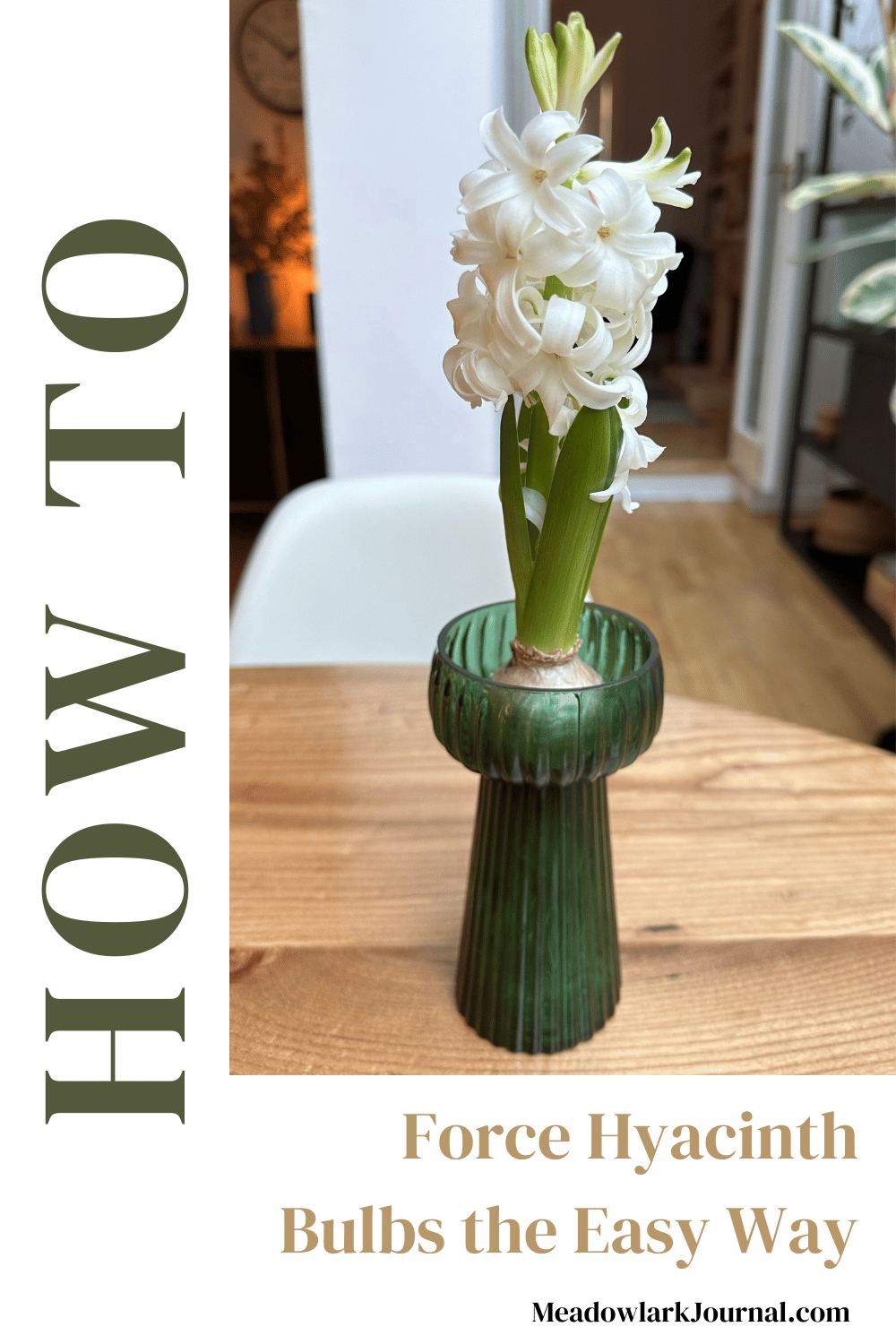Forcing Hyacinth Bulbs The Easy Way
This website is reader-supported - thank you! This post may contain affiliate links. As an Amazon Associate, I earn from qualifying purchases at no extra cost to you.
There’s nothing quite like seeing flowers bloom indoors while the world outside feels frozen in time.
Forcing hyacinth bulbs is one of the best ways to bring a little brightness into the winter months.
It’s easy, rewarding, and honestly, watching those blooms unfold feels like a small miracle every time.
What I love most about forcing hyacinths is how they instantly transform a space.
Whether they’re perched on a windowsill in a delicate vase or tucked into a cozy pot on the table, they’re like a little reminder that spring is just around the corner—even when it doesn’t feel like it.
If you’ve never tried it before, don’t worry—it’s a lot simpler than it sounds.
Once you’ve got the basics down, you’ll be able to enjoy these gorgeous flowers year after year.
Let me walk you through the process, step by step, so you can bring a touch of spring indoors, no matter the season.
For more spring bulb ideas, check out my guides:
Choosing the Right Bulbs
Picking the right bulbs is key to having success with forcing hyacinths.
When I’m shopping for bulbs, I always look for prepared hyacinth bulbs.
These are treated specifically for indoor blooming and have already gone through their chilling period.
It’s like they’re prepped and ready to wake up early for you!
If you’re not sure what to look for, check the packaging for words like “prepared” or “pre-chilled.”
These bulbs are designed to bloom without needing months of refrigeration, making them perfect for indoor forcing.
I usually find them in garden centers during the fall, and I love stocking up around October or early November.
And here’s a little tip I learned the hard way: pick bulbs that feel firm and heavy.
Avoid any that are soft, moldy, or have visible damage—those likely won’t bloom well, if at all.
Think of it as choosing the best apples at the store; you want the fresh, plump ones, not the squishy leftovers.
If you’re aiming for something special, like blooms by Christmas, grab the prepared bulbs early.
Once you’ve got them, the rest of the process is a breeze.
For more bulb growing tips, check out my guides:
Forcing Hyacinth Bulbs in Water
This method is perfect if you want something sleek and low-maintenance.
I love using forcing vases—those hourglass-shaped containers made just for this purpose.
These are great ones and will allow you to see the roots start to develop:
Here’s how I do it:
Fill the vase with water so it’s just below the base of the bulb. It’s important that the bulb doesn’t actually sit in the water—it needs to breathe a bit.
Place the bulb pointy side up.
Set it aside in a cool, dark spot, and watch the roots start to grow. It’s honestly magical to see those little roots winding down into the water.
For more spring bulb inspiration:
Forcing in Soil
If you’re going for a more natural look, or if you’ve got a few bulbs to force at once, soil might be the way to go.
I usually grab a shallow pot with good drainage and fill it with well-draining soil.
This is a great one to use:
Pro tip: use a mix that doesn’t get too compacted; bulbs like a little breathing room.
Here’s what I do:
Place the bulbs in the soil with the pointy ends up and the tops just peeking out.
Water the soil gently—you want it damp, not soggy.
Just like with water forcing, keep the pots in a cool, dark spot while the roots develop.
What I love about the soil method is that it feels like a little indoor garden.
Plus, the pots are easier to move around if you’re like me and love rearranging things every few weeks!
Before I finished planting, I added a little more soil in to top it off.
For more bulb growing tips, check out my guides:
Secrets to Successfully Planting Allium Bulbs
Chilling Prepared Hyacinth Bulbs
Here’s where the magic of forcing hyacinths truly begins: the chilling period.
Think of this step as convincing your bulbs that they’ve been through a long winter, even if they’ve just been hanging out in your garage or basement.
It might sound tricky, but trust me—it’s simpler than it seems.
Here’s how to do it:
For vases, tuck them away in a cool, dark spot like an unheated garage or basement.
For pots, you can wrap them in a bit of newspaper and keep them in the same type of spot. The goal is to mimic the cold, dark conditions of winter.
How Do You Know When They’re Ready?
After 8-12 weeks, you’ll start seeing tiny white roots or buds forming—that’s your signal to bring them out into the light and warmth.
The chilling stage might not seem exciting, but it’s the secret sauce to getting those gorgeous blooms.
For more ideas, check out my guides:
How to Chill Hyacinth Bulbs
If your bulbs aren’t “prepared” or “pre-chilled”, they’ll need a little extra help to get them ready to bloom indoors.
If you’ve bought prepared hyacinth bulbs, you’re in luck and you can skip these steps.
Here’s how to do it:
Start by placing your bulbs in a breathable bag. A brown paper bag works well because it keeps them dry and lets the air circulate. Avoid plastic—it traps moisture and can lead to mold (and nobody wants that).
Pop the bag in the crisper drawer of your fridge and leave them there for 8-12 weeks. During this time, the bulbs are getting the signal that winter is here.
One big tip: keep them away from fruit, especially apples. Apples release ethylene gas, which can mess with the bulb’s ability to bloom.
For more inspiration, check out my guides:
Setting the Stage for Growth
Once your bulbs have had their winter nap in their cool, dark spot, you’ll start to notice that buds start to peek out from the top of the bulb.
Now it’s time for the exciting part—bringing them into the light and watching the magic happen.
This stage always feels like the reward for a little patience and planning.
Here’s how I like to set the stage for the blooms.
From Cold to Cozy
First, take your chilled bulbs (whether they’re in water or soil) out of their cool hiding spot and place them somewhere with indirect light.
I like to set mine on the kitchen table that gets bright but filtered sunlight—it’s like easing them into the spotlight instead of blinding them with center stage.
Plus, keeping them out of direct sun helps prevent them from growing too fast and getting floppy.
Cool and Steady Wins the Race
At this point, temperature is your best friend.
Aim for a spot that stays around 60–65°F (15–18°C).
Think cozy but not hot—kind of like sweater weather for your bulbs.
If it’s too warm, they might rush to bloom and end up looking a bit leggy.
Slow and steady growth is the goal.
Watching for Buds
This is the part where I check on them obsessively every day—it’s so fun to see the progress.
If you’re using a forcing vase, you’ll also see the roots winding beautifully into the water below.
Moving to Bright Light
Once you see the buds forming, it’s time to give your bulbs a bit more light.
Move them to a brighter spot, but keep them out of harsh, direct sunlight.
I always keep an eye on the water level for vases or the soil moisture for pots, topping up as needed—these bulbs are thirsty as they grow!
Bulb that has just been removed from its cold, dark spot and put into indirect sunlight.
For more garden inspiration, check out my guides:
Caring for Hyacinths After They Bloom
Once your hyacinths have graced you with their blooms, you might be wondering, “Now what?”
It’s tempting to toss them out and call it a day, but with a little care, you can give those bulbs a second chance at life—and maybe even another bloom down the road.
Let Them Rest
The first thing to do after the flowers fade is resist the urge to chop off the leaves right away.
It’s not the prettiest stage, but those green leaves are hard at work, soaking up sunlight and sending energy back to the bulb.
This process helps the bulb recharge for its next bloom cycle.
You can tuck the pot or vase in a less visible spot, like a corner of the windowsill, and let the leaves do their thing.
Watering and Feeding
During this phase, keep watering the bulb lightly—just enough to keep the soil damp but not soggy.
If I’ve forced the bulbs in water, I make sure the roots stay submerged without letting the bulb itself sit in the water.
Every now and then, you can add a little diluted liquid fertilizer to give the bulb an extra energy boost.
What to Do When the Leaves Die Back
Once the leaves turn yellow and dry out completely, it’s time to cut them back.
I use clean scissors and trim them right at the base.
At this point, the bulb is officially “asleep” and ready to be stored for the summer.
Replanting Your Bulbs Outdoors
Here’s where you can give your hyacinths a second life.
If you have a garden, plant the bulbs outside in the fall, just like you would with any other spring bulbs.
Choose a sunny spot with well-draining soil, and plant them about 4-6 inches deep.
While they might not bloom as spectacularly the first year after forcing, they often bounce back with time and care.
If You Don’t Have a Garden
No garden? No problem.
You can still try storing the bulbs in a cool, dry place and replanting them in a pot next season.
A Fresh Start
If replanting isn’t your thing or you just want fresh bulbs for next year, that’s totally okay too.
Forced bulbs sometimes struggle to bloom a second time indoors, so it’s not a bad idea to treat yourself to new ones each fall.
Quick FAQs
How much water should I use in a forcing vase?
The water level should sit just below the base of the bulb.
You don’t want the bulb to sit in water, as this can lead to rot.
Keep an eye on the water level and top it up as needed.
Do hyacinth bulbs need direct sunlight to bloom indoors?
No, indirect light is best.
Too much direct sunlight can dry out the bulb or make it grow too quickly and become leggy.
Why do hyacinth bulbs need to be chilled?
Chilling mimics winter conditions, which triggers the bulb’s internal clock to bloom.
Without this step, the bulbs won’t flower.
Can I force hyacinth bulbs without a vase?
Absolutely. If you don’t have a forcing vase, you can use a glass jar, a regular pot with soil, or any container that allows you to position the bulb properly.
How do I cut hyacinths for indoor arrangements?
Cut hyacinths when the blooms are about halfway open.
Use a sharp, clean pair of scissors or garden shears and place the cut stems in water immediately.
How do I force hyacinths for Christmas?
If you’re forcing hyacinths for a specific occasion, like Christmas, plan ahead.
Start the chilling process by November for blooms in late December or early January.
In general, it takes about 12-16 weeks from start to finish, depending on the bulb and the conditions.
Can you replant hyacinth bulbs after forcing?
Yes, you can!
After the blooms fade, let the foliage die back naturally, then store the bulbs in a cool, dry place until it’s time to plant them outdoors in the fall.
While they might not bloom the first year after forcing, they usually recover with time.
For more ideas, check out my guide:
Wrap-Up
Learning how to force hyacinths is such a great way to bring spring bulbs indoors, even in the middle of winter.
Whether you’re setting up a single bulb in a vase or arranging a few bulbs per pot for a fuller display, the process is surprisingly simple and so satisfying.
With a bit of patience and care, you’ll have vibrant flowers to enjoy—and they’re sure to brighten up even the coldest days.
If you give it a go, let me know in the comments section below!
Pin this post to save it for later:


